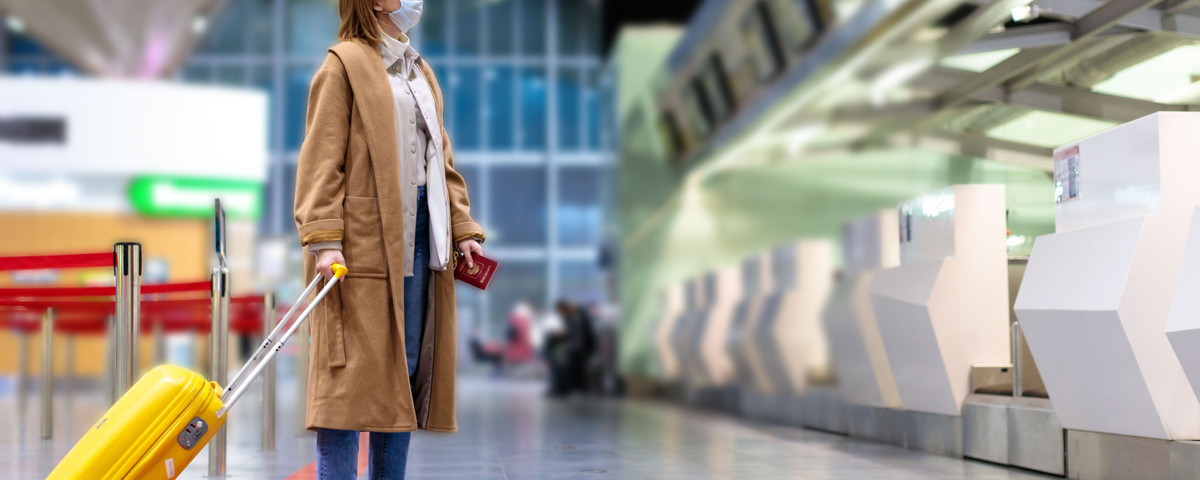As 2020 is left behind, key factors such as critical geopolitical changes, health developments, or new trends in traveller behaviour are set to shape the sector and bring exciting challenges and opportunities throughout 2021.
The year of face masks, Zoom meetings, closed borders, and quarantines is officially over. While the calendar moves on, new affairs are about to enter the global scene and join the changes that started in 2020. In this context, the travel sector worldwide awaits to face a set of different complex situations that may pose either threats or opportunities depending on how well they are managed. In the next paragraphs, I explain the most significant global forces with the potential to transform, for better or worse, our industry.
COVID-19: tests and vaccines
The trending topic of 2020 will remain around us, so will many of the measures designed to reduce its spread when travelling. An overall expansion of test centres is expected as more and more destinations request travellers to present negative PCR tests before crossing their borders. Although airports like Heathrow are already offering in-terminal test centres (with prices ranging from £40 to £99 and results given between 45 minutes and 48 hours), the type of test needed varies from one country to another. This lack of overall agreement results in more confusion to the COVID-era-traveller who has to adjust their travel budget to accommodate the cost of these tests.
Therefore, the mass rollout of an effective vaccine has turned into the main priority. By mid-December 2020, the University of Oxford’s vaccine had sold over 2.6 billion doses, with Novavax (1.3 billion), GSK (732 million), Pfizer (711 million), and Moderna (407 million) forming the top 5 of manufacturers with the largest amount of sold doses. Regarding the main buyers of these vaccines, the European Union (1.6 billion), India (1.5 billion), and the US (1 billion) are the leading regions in terms of purchased doses.
Vaccination plans are already in action, yet they remain in their initial stages and further examination is required to check the vaccine’s efficiency. Nevertheless, this development offers some moderate optimism for both society and the travel business, although some restrictions will keep affecting the way we travel in the short term until the vaccines are tested and fully distributed to countries.
Brexit: stepping into the unknow
The whole European continent breathed in relief when London and Brussels signed a trade deal between the UK and the EU in the last week of 2020. In terms of travel-related matters, the agreement ensures connectivity between the two blocks as well as cooperation to respect both passengers’ and workers’ rights. In addition, some changes will be introduced over time, including the development of a new visa system and the UK’s withdrawal from the Erasmus Program the most relevant ones for travel businesses and travellers. However, both leisure and business trips can go ahead, for periods up to 6 months, without need to apply for a visa.
In terms of transportation, the aviation sector seems to be the most impacted one. British airlines will need to negotiate with each member of the EU the conditions of their operations, yet it is highly likely that they will be allowed to fly over European skies as well as connecting British airports with European ones. One particular case to keep an eye on is International Airlines Group (IAG), a holding that combines airlines from the UK (British Airways), Spain (Iberia, Vueling, and Level), and Ireland (Aer Lingus).
Lessons from 2020: how to apply them to the new travel trends
Overall, we have gained quite an amount of resilience for our industry thanks to last year’s events. However, elements like technology and sustainability need to be readapted in the travel sector to address a pandemic that is evolving into new variants. The next paragraphs show some of the insights that 2020 provided and which will shape the trends within the travel industry throughout 2021.
Health and safety protocols will remain a must for every travel business, from airlines and cruise lines to hotels, to entertainment attractions. Therefore, measures like social distancing, face masks, sanitizing stations, and disinfecting processes are expected to remain in place for the short term. In addition, businesses which have not done it yet, need to integrate these health and safety protocols into their marketing strategy to differentiate themselves and cater for customers whom these measures have become a key factor in their purchase intention.
Travellers going local by ‘staycations’ is a trend that experienced a remarkable growth during 2020 and that will remain stable for this new year. Therefore, DMOs must dedicate efforts and resources to develop marketing campaigns which put value into their domestic attractions yet without neglecting the international tourist market in the medium term. Similarly, and as consequence of a combination of global travel restrictions and overall increased costs due to COVID-19 tests, different ways of travelling will emerge in 2021. From solo travel, to a hybrid of luxury and relaxation, to weekend city breaks, to even trips in travel pods. There are many travel trends, as well as innovative products and experiences, emerging in the COVID era which reveals not just the wanderlust of global travellers but the resilience of the travel and tourism sector against this ongoing crisis.


